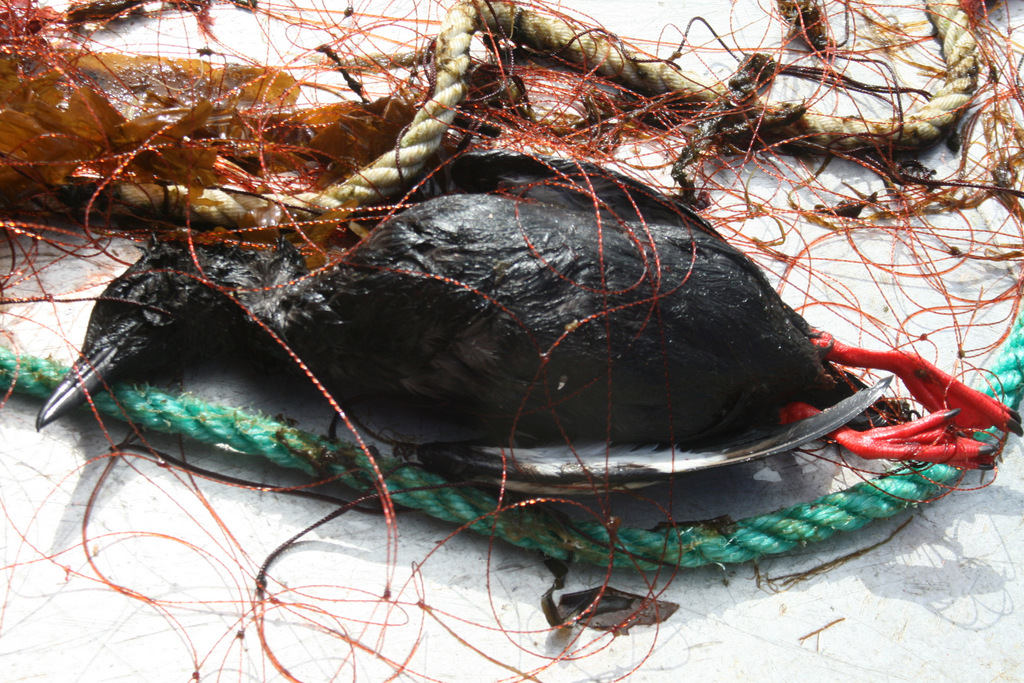Will scare seabirds from drowning
We have found clear trends for where and when seabirds get caught in gillnets, and in variations in the species prone to be caught. This makes it possible to introduce tailor-made, local measures to prevent such bycatch, instead of introducing general measures at the national level, says researcher Kim Magnus Bærum of the Norwegian Institute for Nature Research (NINA).
This article was first published on the NINA website.
Reduce extreme cases
The researchers estimate that between 4000 and 8000 seabirds drown annually as a result of bycatch in the Norwegian coastal gillnet fishery. Approximately equal numbers of diving birds and surface-feeding birds are caught.
– It is important to point out that the total number of seabirds that are inadvertently caught in gillnets is driven by several “extreme” cases, where 20-100 birds are caught on a single trip. By gaining insight into where and when this happens, we can help avoid these cases and thus greatly reduce the total extent of bycatches, says Bærum.
Deter with sound and movement
There has, so far, been little research on concrete measures to reduce bycatch in net fisheries, but the researchers have some thoughts about the problem. One is to use nets that are more visible to birds, but not to fish. Another is to equip the nets with so-called “pingers” that emit sound and thus possibly scare the birds. These measures are especially suitable for nets set in shallow waters (down to 50 m) and close to the shore. They would be most relevant in the northern counties of Finnmark and Troms in January-April and October-December.
Trends for birds feeding on the surface are not so clear, but here too Finnmark and Troms generally have higher rates of bycatch than the rest of the country with a peak in May-June. Surface-feeders generally get caught under the setting and retrieval of nets. To prevent this, it may be effective to scare off birds using, for example, a line with attachments that splash in the water or flutter in the wind.
Fishing for experience and knowledge
– For us, it is important to involve the fishermen. We need their experience and knowledge, both to find good measures to reduce by-catch and to get a better overview of the frequency of extreme cases, says Bærum.
The next step is to determine how important the extra bycatch mortality is for seabird populations. What is certain is that bycatches are becoming increasingly important in international environmental certifications of the fisheries. Finding good solutions will therefore help to facilitate a forward-looking and sustainable fishing, and to maintain high fish prices.
Read the original paper:
Contact person: Signe Christensen-Dalsgaard, NINA
